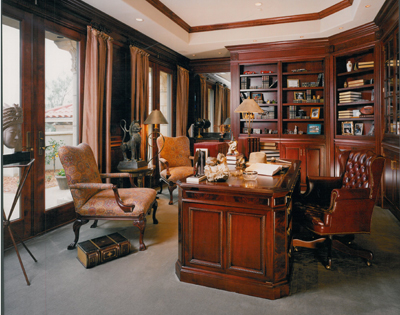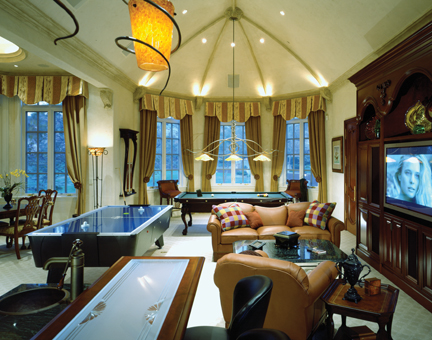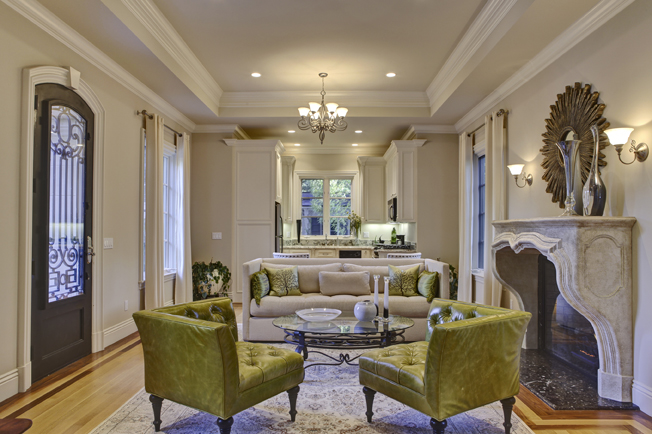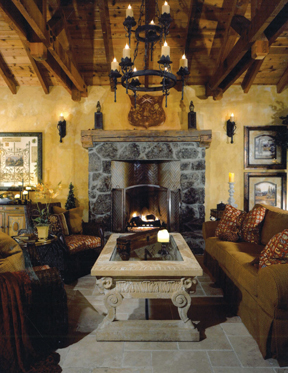There are many transitions as you walk through any home. Ceiling heights change, paint colors vary by room, window heights and sizes change, as well as flooring. Floor transitions are probably the most noticeable if done incorrectly. The idea with any transition is to execute it as seamlessly as possible. Sometimes these changes are unavoidable, so how do we handle them? Incorporate flooring design into the architecture of the home. 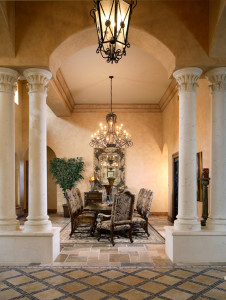
Start a flooring change at the entrance of a new room to better define the space. An open formal dining room with rich custom hardwood that leads off of the travertine entry is inviting and cozy. Transitioning from one pattern to another with the same material, like stone for example, moves you from formal to more laid back. A diamond pattern in the entry leading to a Versailles pattern in the family room and kitchen is a subtle yet effective transition.
Attempting to match hardwoods is next to impossible, especially if the original was installed years ago and the stain has faded from sun and foot traffic. If you need to replace carpeted areas with hardwood and the older hardwood is within sight, try choosing a complementing grain and stain. Using a thin inset boarder that brings the original wood grain and color into the new is a way to tie the two together. You will know if going lighter or darker for the new material is best for your home based on the tone of the old. Matching sheen is the best way to keep a consistent look, having light hit the floors differently will be something you notice. Be sure to also stay in the same color family; if you had a rich brown stain with no reds, stick with the browns for the new wood. As always, when in doubt ask a professional designer.

